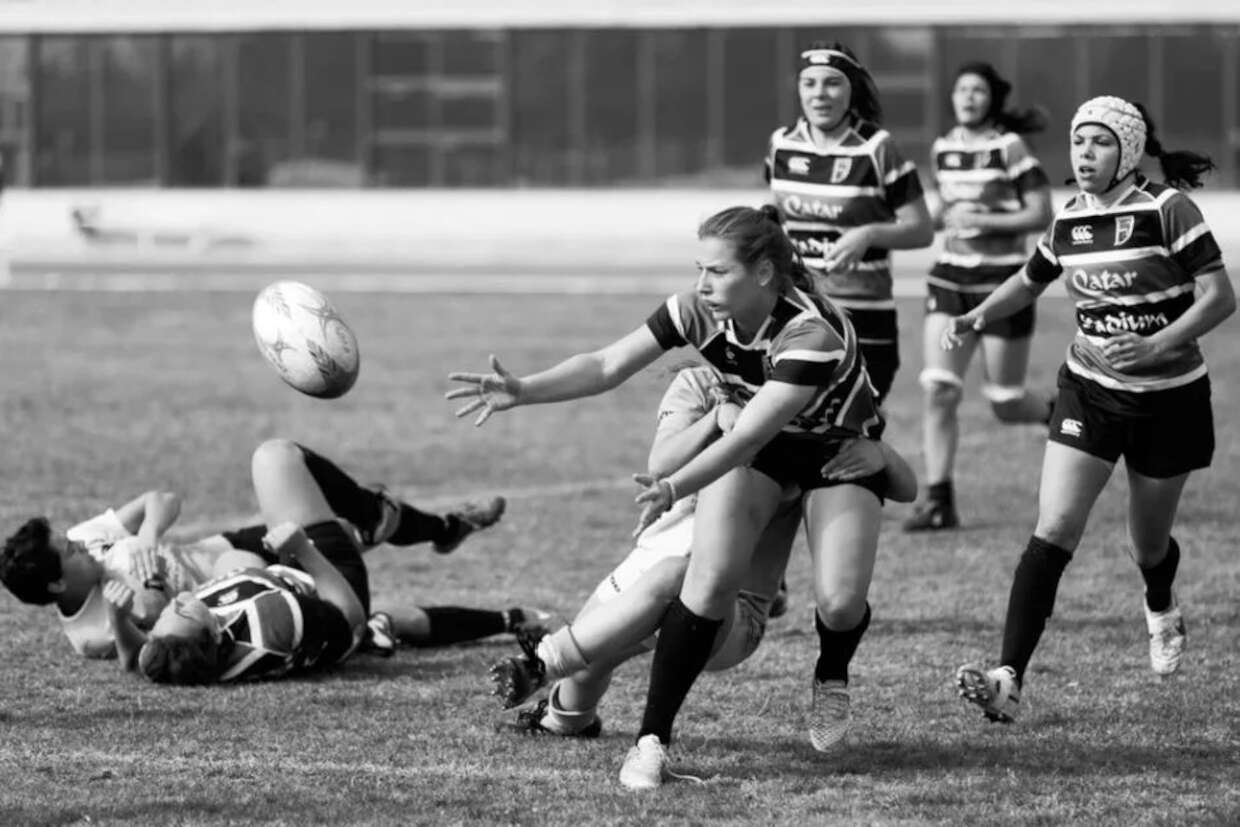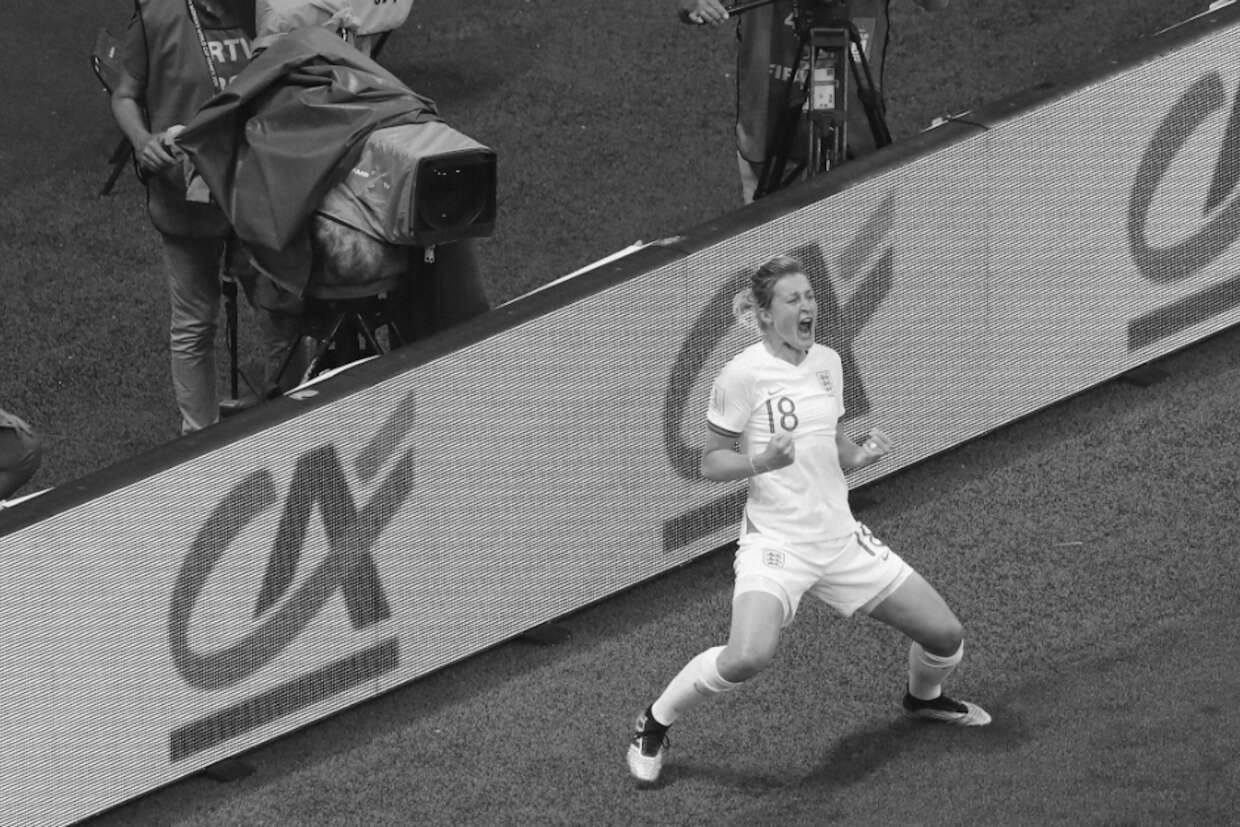In the late 1800s, women’s football was hugely popular, with matches attracting thousands of spectators. In 1920, a crowd of 53,000 watched Dick Kerr Ladies beat St Helen’s Ladies 4-0 in a Boxing Day match at Everton’s Goodison Park.
But as Britain moved on from the horrors of the First World War, attitudes reverted to type. In 1921, the Football Association banned women from playing at member grounds, stating: “The Council feel impelled to express their strong opinion that the game of football is quite unsuitable for females and ought not to be encouraged.”
It took until 1971 before that ban was reversed.
Breaking into the mainstream
The majority of women’s sports have faced the same uphill battle, but football is spearheading a long-overdue renaissance. “I genuinely believe that women’s football can be the first female team sport to break through into the mainstream,” said Kelly Simmons, the FA’s Director of Women’s Football.
“What I mean by that is that there are a lot of women’s sports that have peaks of interest at the Olympics or major tournaments, but they then disappear. With the clubs we have and the investment that is taking place, we can be that breakthrough sport where the players are households names playing in front of larger crowds at sustainable clubs.”
After decades in the doldrums, women’s football is now in the ascendency: the 2018 SSE Women’s Cup Final between Chelsea and Arsenal enjoyed a gate of 45,423 – some 10,000 more than the previous year’s event. And the 2019 FIFA Women’s World Cup being held in France looks set to break all records for attendance and viewing figures.
The role of digital broadcasting
And it’s not just football: a wide range of women’s sports are enjoying a surge in popularity. One of the key reasons being that – apart from a few disciplines such as tennis and athletics – female sport has always been underrepresented on broadcast television.
Five years ago, it amounted to just 0.7% of the total sports media coverage. Naturally, this lack of visibility has kept its popularity in check, which in turn starves the various governing bodies of sponsorship and funding. However, the arrival of digital broadcasting – with hundreds of TV channels, streaming services and video-on-demand websites – has opened a new and exciting chapter.
In 2018, every game of the Women’s Cricket World Cup was televised or streamed, enabling fans and casual viewers worldwide the chance to cheer on their nation’s team. The resulting influx of sponsorship and broadcast rights provides valuable funding for the England players, who now enjoy central contracts, the same as the men, and play to an increasingly high standard. It’s no surprise that the Wisden Almanack recently named three women among its five players of the year.
Supporting women in sport
Sky TV has been a supporter of women’s sports for many years, with extensive coverage of the major cricket, rugby, golf and netball competitions. This year, every game of the Vitality Netball World Cup will be shown live on Sky Sports, and it’s playing host to all of England’s games in the Six Nations – the rest of the rugby union competition is split between BBC, ITV and some dedicated sports outlets. Highlights can also be viewed via the Women’s Six Nations YouTube channel.
Elsewhere, the BBC will be streaming action from Women’s Super League Football via BBC Sport online and its iPlayer service, while BT Sport has inked in a four-year deal with the International Hockey Federation to show World Cup and Pro League matches.
Statistics show a growing appetite for women’s sport. According to Nielsen:
- 59% of the UK population are interested in at least one women’s sport. In countries such as the US, Germany, France and Italy, this rises to 66%
- 84% of general sports fans are interested in women’s sports – and of those, 51% are male
- The 2017 UEFA Women’s Euro football competition attracted a TV audience of 150 million. In the UK, 2.7 million watched the semi-final when the Lionesses lost 3-0 to Netherlands
- The 2018 Chelsea vs Arsenal Women’s FA Cup final was watched by 1.6 million on BBC TV
- The 2017 Women’s Cricket World Cup final – in which England beat India by just nine runs – attracted half-a-million viewers on Sky Sports
Embracing commercial opportunities
As well as a general visibility of women’s sports, a rise in public awareness also provides commercial openings for smaller brands. Sponsoring a Premier League football club can involve seven-figure sums, but the barrier to entry for women’s teams is much lower. However, according to Nielsen data, the value of women’s sport sponsorship deals rose by 47% between 2013 and 2017, a statistic that’s set to surge with all the major international events taking place in 2019.
The advent of digital broadcasting has enabled smaller sports organisations to engage with their audience across a range of connected devices. This generates funding to improve training and facilities, which helps sportswomen to become more competitive. This in turn drives new memberships and attendances at live events. It’s a virtuous circle that promises great things for women’s sport in the years ahead.
---
For these sports to ensure they’re in a good position to take advantage of these new opportunities, they need to have the digital infrastructure in place to deliver video content to new channels and broadcasters quickly.
For insider insights from industry leaders at The FA, International Netball Federation and COPA90 download our exclusive report: Content is Queen; Digital Lessons from Women's Sports.



